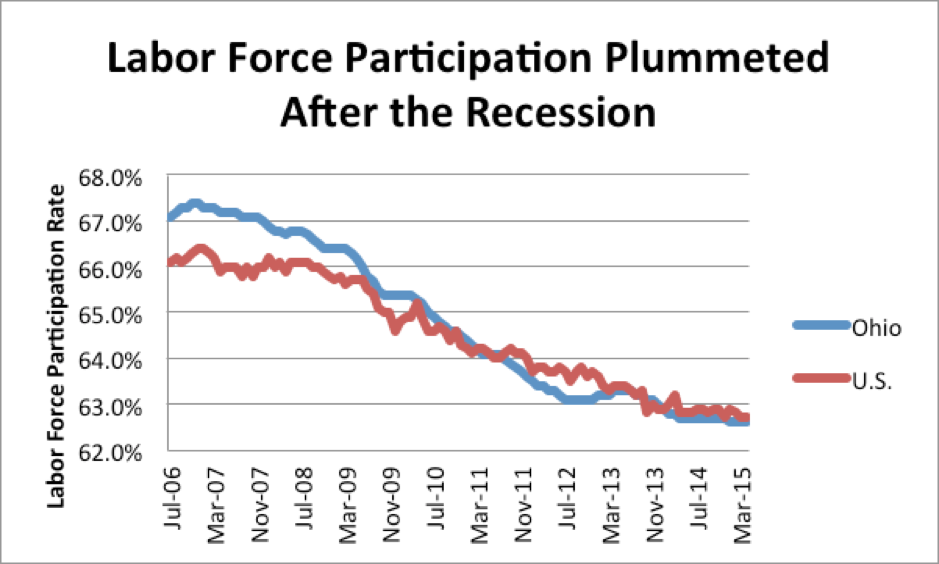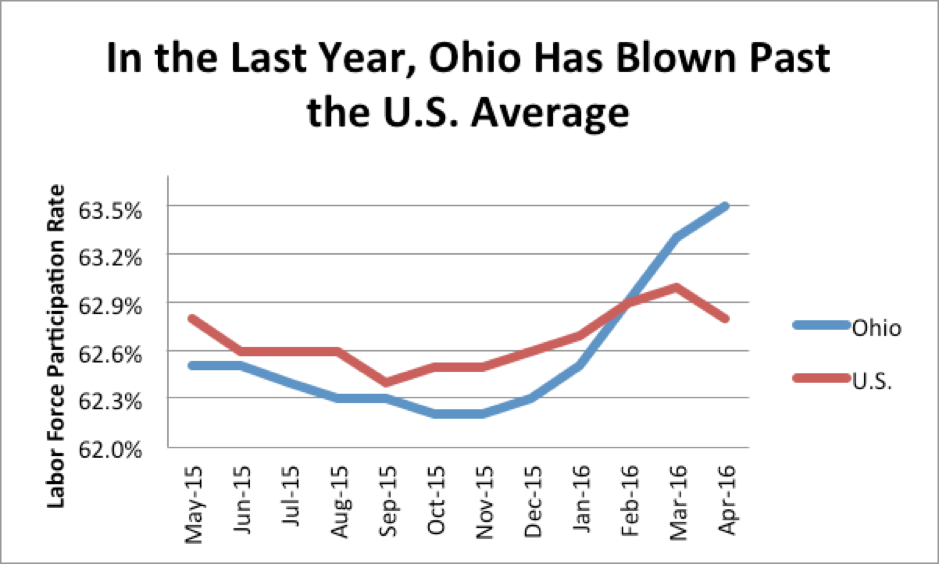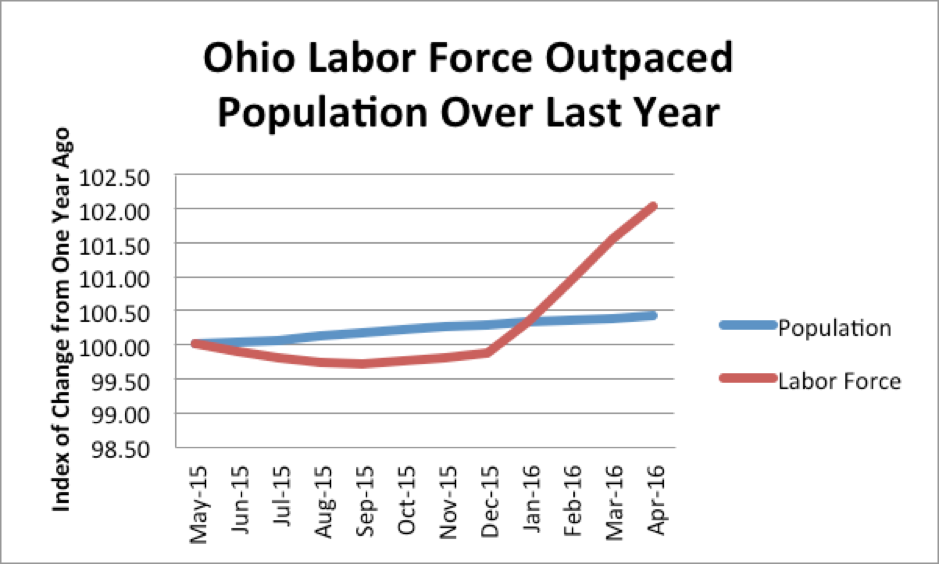Ohio Jobs Tracker: What caused Ohio’s increase in labor force participation?
May 23, 2016
Something strange is happening in Ohio. In recent years, the Ohio economy has been mediocre to dead-last when it comes to most economic metrics. But lately, the Buckeye State has led the country in one of the most important economic indicators.
Specifically, Ohio’s labor force participation rate is growing faster than the national average, which the state’s April jobs report recently showed. This metric tracks the number of people who are working or actively looking for a job relative to the total number of working-age people. A high labor force participation rate means the economy is healthy and people are optimistic about their opportunities in the workforce.
After the Great Recession, labor force participation plummeted across the country and has yet to return. Many people lost their jobs and either retired early, gave up after failing to get a new job, or just never felt good enough about their prospects to even try. It’s one of the biggest and most persistent problems in our economy today. Economist Casey Mulligan has shown that policies intended to relieve the unemployed, such as expanded Medicaid and unemployment insurance, only served to exacerbate the problem.

Fortunately, that’s starting to turn around at the national level, and Ohio has curiously become one of the juggernauts driving this trend. The Buckeye State jumped a full percentage point in the last 12 months, while the U.S. remained flat.

Best of all, this change is happening for all the right reasons. The labor force participation rate can increase because of more people working or searching for a job, or because the working-age population is declining as people retire or leave the state. Ohio’s working-age population is relatively flat, but people are surging into the labor market in recent months. This is cause for optimism and, if the trend continues, might be a harbinger of real recovery (at last).

In the weeks ahead, we will break down the national average at the state level and take a closer look at who else is doing well (and who isn’t).

